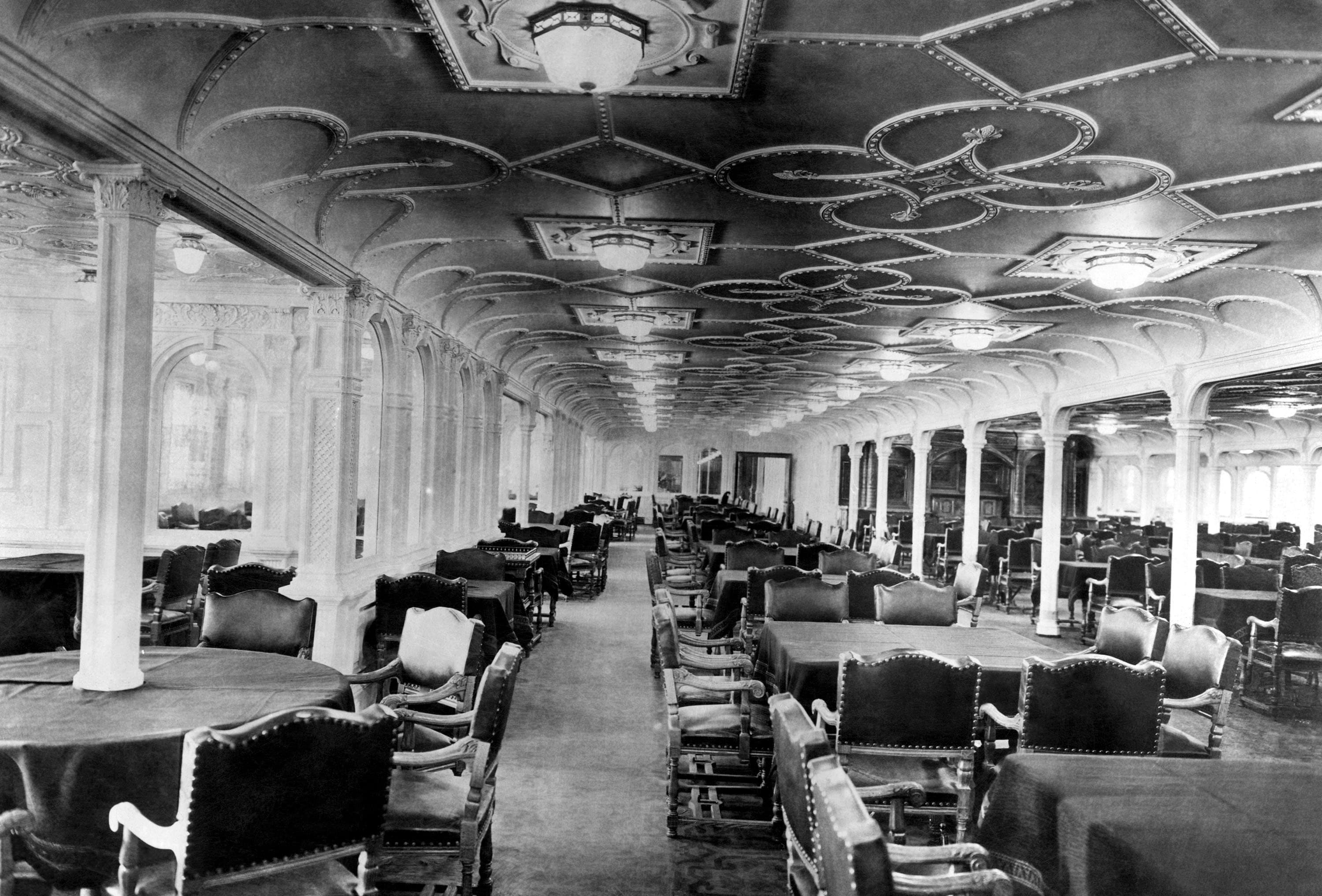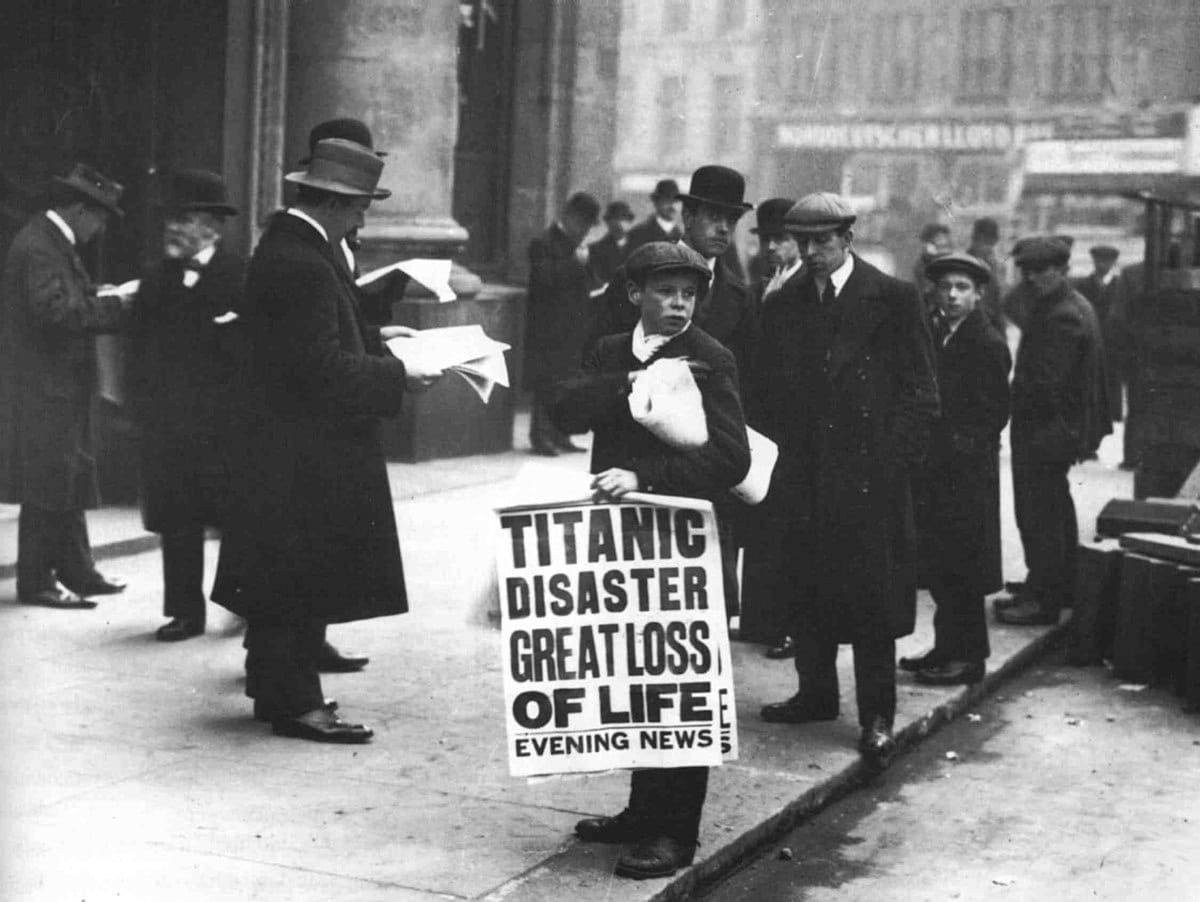About the Titanic
The Titanic is perhaps the most famous ship in the world. It sank in 1912 in the North Atlantic after colliding with an iceberg. The Titanic had a double bottom and fifteen bulkheads (walls) that could be closed in case of danger. These would allow the Titanic to stay afloat with four compartments filled with water. More damage than this was not considered possible.
To travel 1st, 2nd or 3rd class
On board were first, second and third class. First class was incredibly luxuriously furnished and a ticket to America could cost over 100,000 kronor! Second class was nice too, while third class was at the bottom of the boat in the bow and stern and was much simpler. Most people on board traveled third class.


Ice warnings
The Titanic left Southampton, England on April 10, 1912 on its journey to New York. On April 14, it received six ice warnings on the telegraph. At 23:40, a lookout spotted an iceberg directly in front of the ship. They tried to steer to the side, but instead the angle was very unfortunate: the iceberg damaged the ship by 90 meters (out of 270 meters), five and a half compartments. The Titanic’s engineer who was on the trip explained to the captain that when five compartments are filled with water, they push the bow so deep into the water that the whole boat fills with water. So the boat would sink.
Emergency signals
The captain ordered the lifeboats to be prepared and the passengers to put on life belts. The Titanic had room in the lifeboats for 1178 people, but on her first and only voyage there were more than a thousand more people on board. Telegraph operators began broadcasting the SOS distress signal so that nearby boats would steer to the Titanic and rescue people from it.
Confused and dazed passengers had difficulty understanding what was happening. They did not want to leave the ship in small, dangerous lifeboats. Lifeboat number seven with room for 65 people was lowered with only 28 people on board. Lifeboat number 1, with room for 40, rowed away with 12 people. But as the slope increased and the bow sank further and further into the water, more and more people wanted to leave the ship. It was then discovered that there were no lifeboats left on board! More than 1000 people remained on the Titanic and they saw no boats in sight to help them.


Titanic is sinking!
At 02:20, the Titanic sank with its stern almost straight up in the air. The panicked people fell into the water. The life belts would have been enough for all of them but they soon died anyway because the water was so cold. Only three of those in the water survived, and they were pulled into lifeboats.
Accidents can happen!
The news of the Titanic disaster then spread across the world and came as a shock to many, many people. The Titanic was a symbol of modern technology, which was thought to be infallible and to solve many of humanity’s problems. With the Titanic, people learned that accidents could still happen despite the latest technology. Many books have been written and movies made about Titanic. In recent years, people have even gone down to the site of the disaster and recovered objects from it. It is 3.8 kilometers deep there.


Facts about the Titanic
• Titanic beställdes den 31 juli 1908.
• Byggdes på varvet Harland and Wolff, Belfast, Irland.
• Sjösattes 31 maj 1911.
• Sjönk den 15 april 1912 efter att ha kolliderat med ett isberg i norra Atlanten.
• Längd 269,1 m Bredd 28,0 m Djupgående 10,5 m Deplacement 52 310 bruttoton.
• Höjd från skorsten till köl 54 m.
• Propellrar, de små 7 meter i diameter, den stora 9 meter i diameter.



